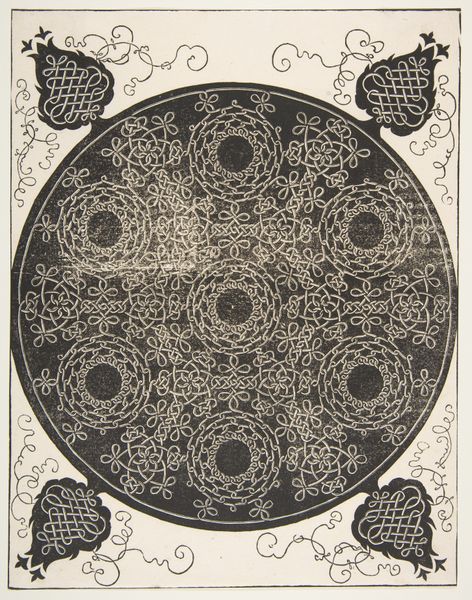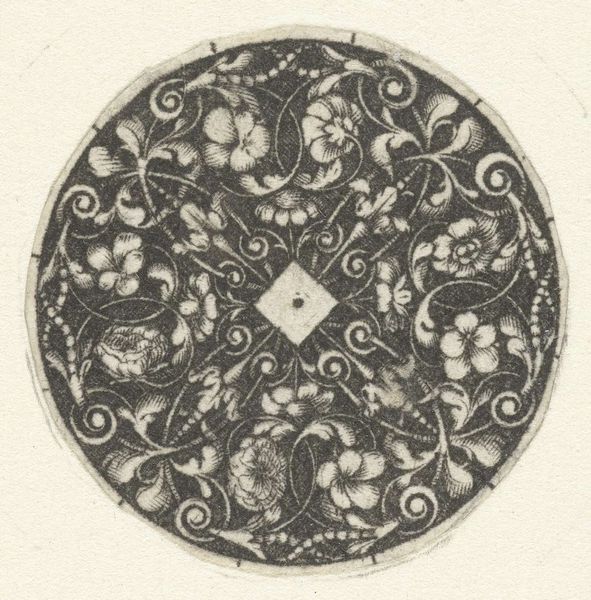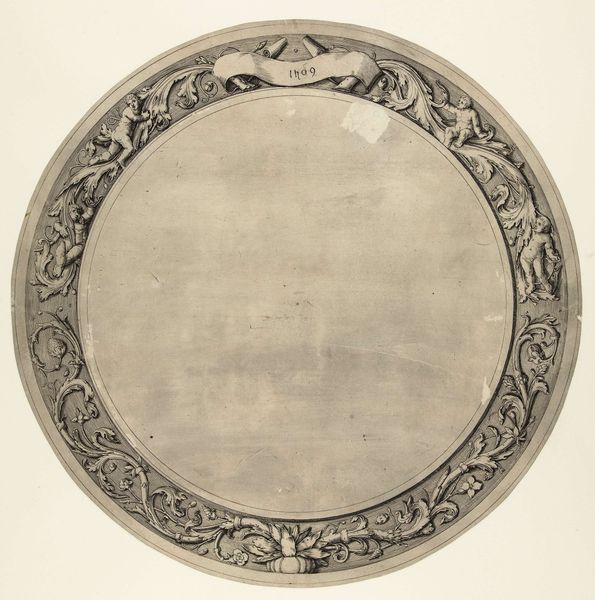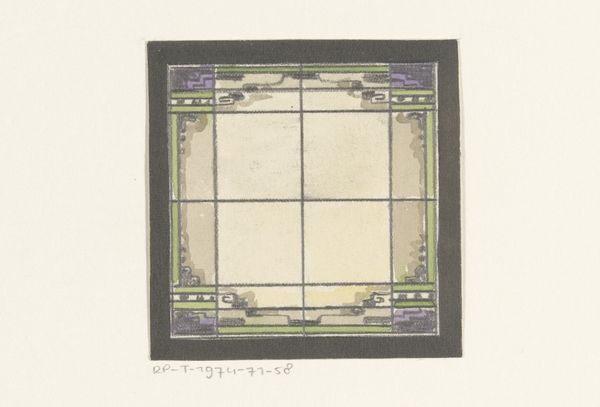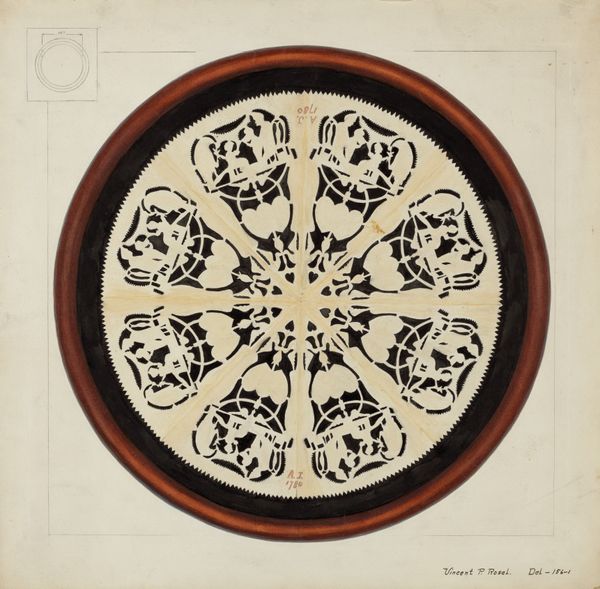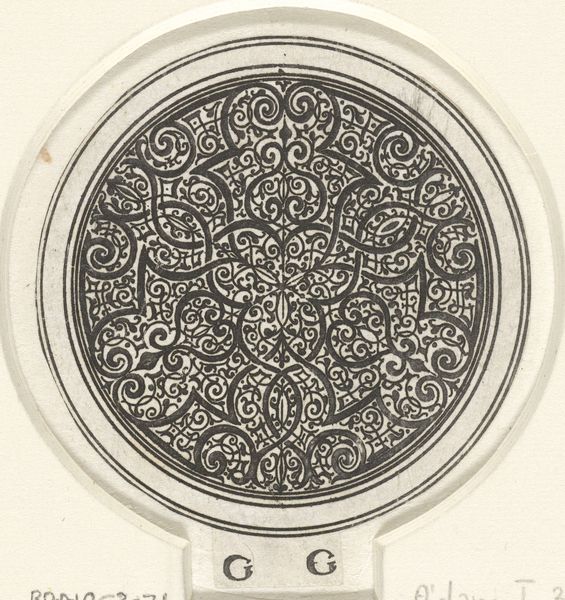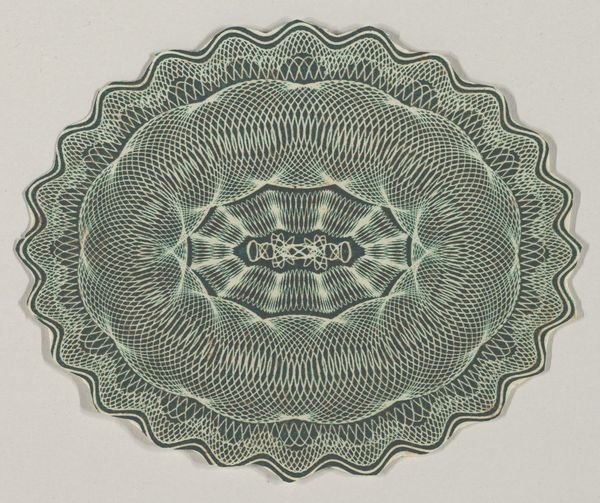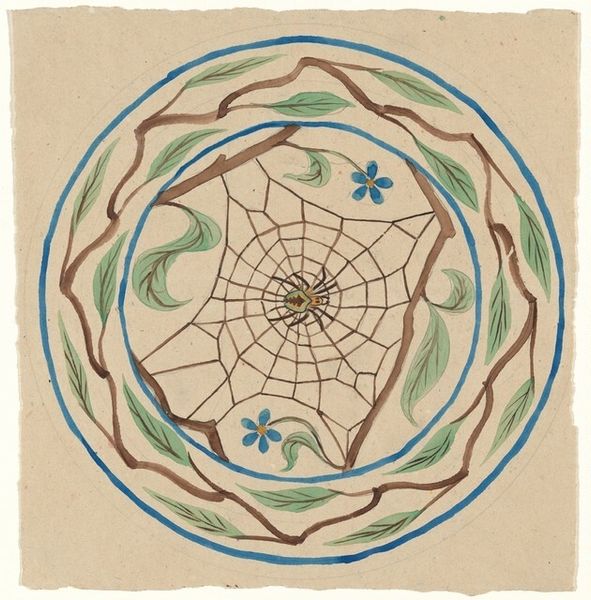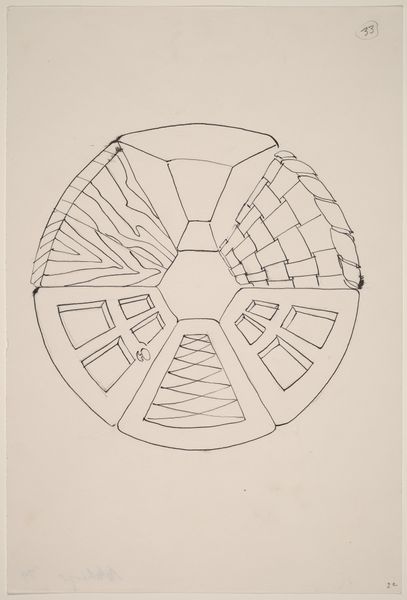
drawing, ink
#
drawing
#
art-nouveau
#
decorative element
#
ink
#
linocut print
#
geometric
#
decorative-art
Copyright: Rijks Museum: Open Domain
Curator: Looking at Carel Adolph Lion Cachet's "Ontwerp voor een bord," created sometime between 1874 and 1945, I’m immediately struck by its Art Nouveau elegance, even in its simplicity. It's a drawing, likely in ink, envisioning the decoration for a plate. Editor: It’s an interesting balance between organic form and industrial potential. You can feel the artist considering its function, the design itself lends itself to repetitive creation of identical patterns, for many units that will be consumed by end users. Curator: Exactly. The repetitive geometric elements, while decorative, point to larger dialogues within Art Nouveau, concerning mass production versus the unique artisanal object. Considering the time period, we also need to consider who these decorative arts are being produced and consumed for, situating them within class structures and colonial trade. Who had access to these designs, and who did the work to make them into objects for the home? Editor: That's key, looking beyond aesthetic appeal to unpack production, labor. These repeating elements wouldn't have been drawn by a machine; it would involve a process that requires human expertise and probably a printing or industrial method if turned into tableware. What does that reveal about its place as "high art"? What labor went into it? What machinery did it demand? Curator: Absolutely. And within the swirling patterns and geometric breaks, what narratives are we promoting through decor? Does it reify colonial power through the exotification of objects found abroad, for instance? It all connects to that wider social context. Editor: It definitely provokes questions about value, from design to execution to sale. It's not just about a pretty drawing, but how we structure labor and creativity. What did Lion Cachet himself get out of this endeavor, versus others further down the production chain? It raises fascinating points about authorship as well as ownership and the broader material conditions behind what may look like mere surface ornamentation. Curator: Considering these issues deepens our experience of this artwork far beyond just appreciation of the linework. Editor: Indeed, the social and material histories embedded in its design gives us so much to chew on—appropriate since it's a plate design! It certainly reframes how we think about consumption too, even with this single ink drawing.
Comments
No comments
Be the first to comment and join the conversation on the ultimate creative platform.
